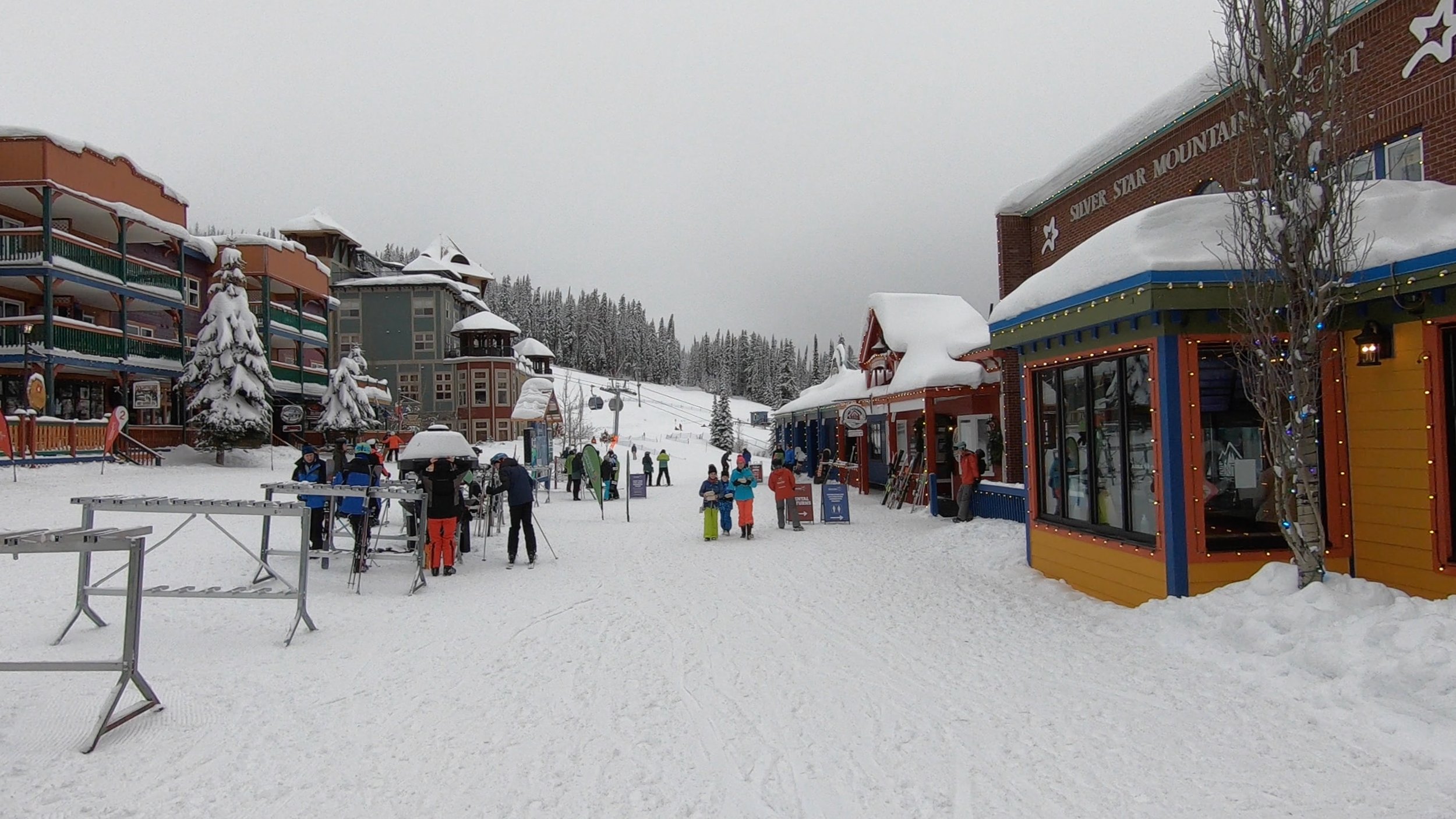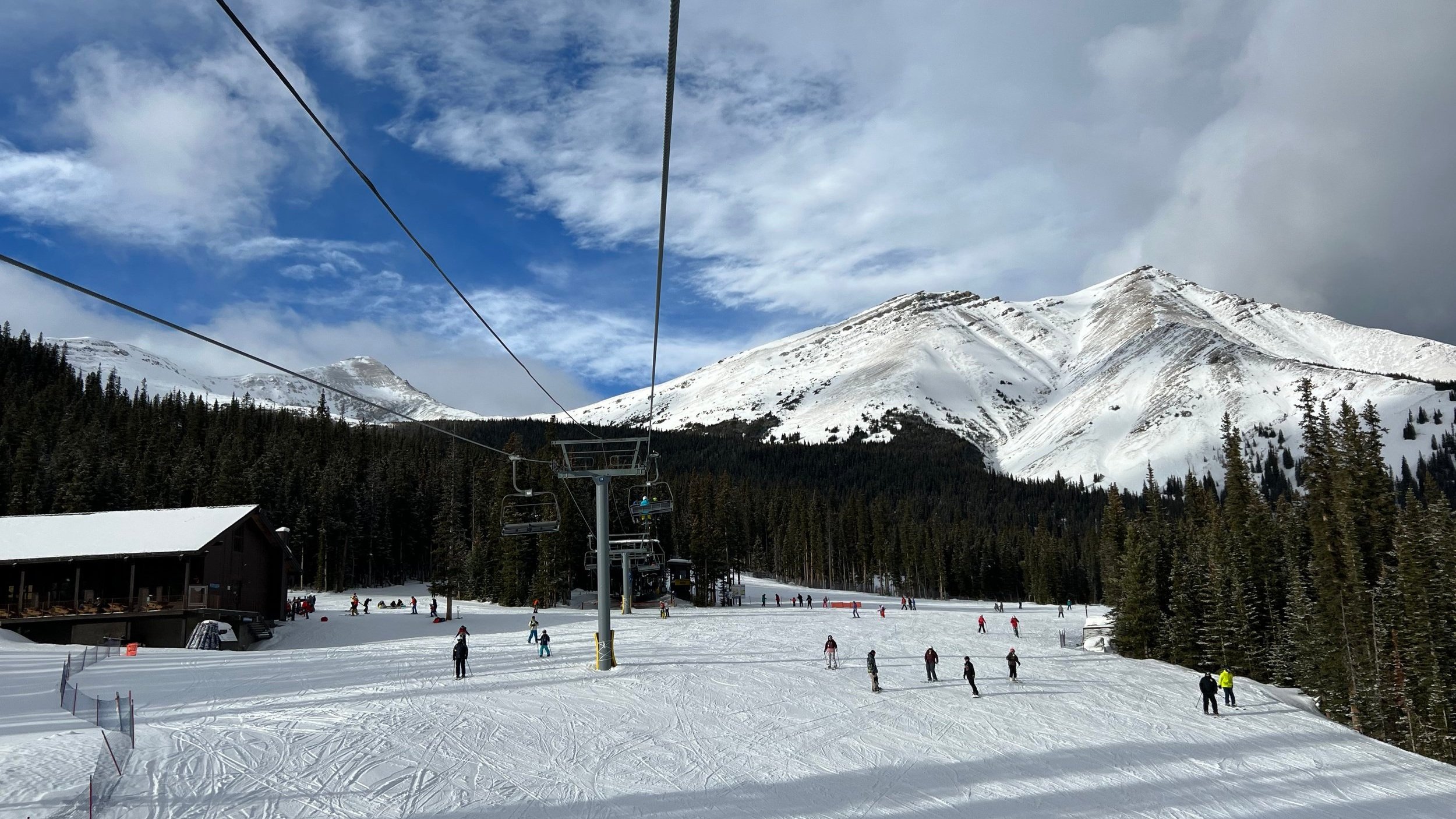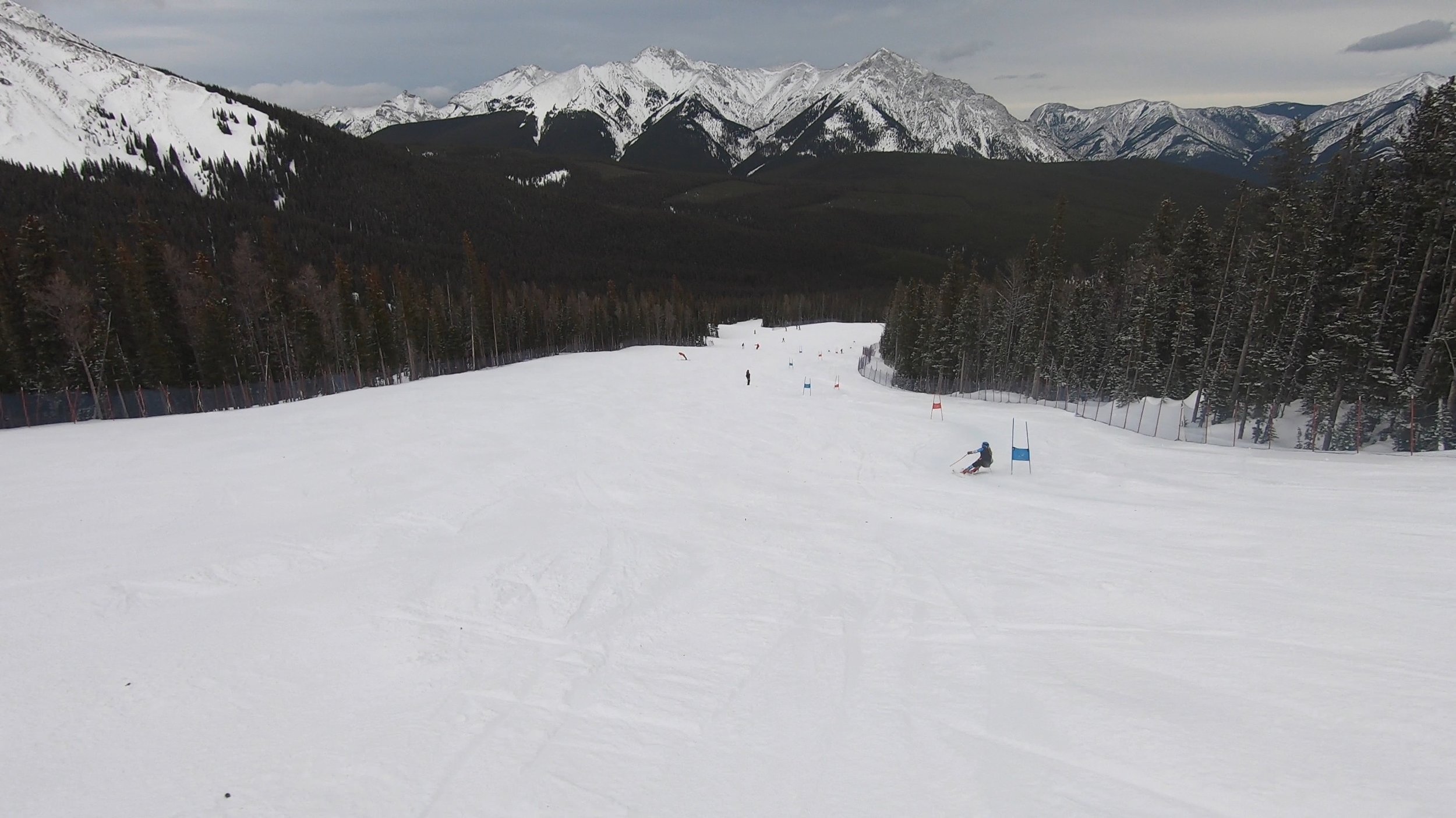Mountain Review: Nakiska
MOUNTAIN SCORE
CATEGORY BREAKDOWN
See our criteria7
Snow:
6
Resiliency:
4
Size:
4
Terrain Diversity:
5
Challenge:
8
Lifts:
5
Crowd Flow:
5
Facilities:
8
Navigation:
6
Mountain Aesthetic:
GOOD TO KNOW
1-Day Ticket: $74-$117 USD ($101-$159 CAD)
Pass Affiliation: Epic Pass (full pass only)
On-site Lodging: No
Aprés-ski: Limited
Nearest Cities: Calgary (1 hr)
Recommended Ability Level:
+ Pros
High-speed lifts
Straightforward footprint
Enjoyable intermediate and advanced terrain
Convenient location close to Calgary
– Cons
Lower snow totals than many competitors
Modest footprint
Peak-time crowds
No on-site lodging
Mandatory paid parking
MOUNTAIN STATS
Lifts: 4
Trails: 71
Beginner: 13%
Intermediate: 59%
Advanced/Expert: 28%
RECENT ARTICLES
Mountain Review
Located on the eastern flank of the Canadian Rockies, Nakiska is the closest major ski mountain to the city of Calgary. The resort isn’t that well known to those who don’t live in the region, but it has one of the most interesting histories of any North American ski resort—having only been developed in the first place due to the need for a 1988 Calgary Winter Olympics venue—and brings over 600 acres of terrain and high-speed lifts.
But developing a ski resort for the Olympics is not the same as developing a ski resort for the general public, and there are several circumstances that hurt Nakiska’s practicality as an option for a destination ski vacation.
Mountain Layout and Aesthetic
Nakiska may sit amidst some of the tallest peaks in Canada, but the resort is located entirely below-treeline, with the ski area boundary stopping just painfully short of the alpine bowls on its host mountain. As a result, while guests will enjoy unmistakable views of above-treeline terrain—including some particularly stunning peaks—they won’t be able to actually ski on it. Nakiska sits in the protected Kananaskis Country area, and despite its convenient location, there’s almost nonexistent buildup in the vicinity surrounding the resort.
Nakiska may be located entirely below treeline, but it offers striking views of the surrounding mountains.
Nakiska can essentially be split into three terrain zones: the lower mountain, which is served by the Silver and Olympic chairs, the upper mountain, which is served by the Gold chair, and a small beginner-oriented learning area, served by the Bronze chair. With the exception of the Bronze double chair, every lift at Nakiska is a high-speed quad.
Beginner Terrain
Despite its nature as a regional-oriented resort, Nakiska isn’t the best mountain in the world for beginners. Besides the Bronze Chair learning area, green trails are quite limited; the resort only has one green route down from each of the lower-mountain lifts—and they merge into one singular green trail that runs all the way to the base about a third of the way down. These trails get incredibly congested, making for less-than-ideal learning conditions. When it comes to the upper mountain, no green trails exist at all.
Nakiska’s limited beginner terrain and family-heavy clientele make for notable congestion on green trails. Intermediate-level runs offer much more comfortable skier and rider density.
Intermediate Terrain
Nakiska becomes a much better mountain once guests reach intermediate proficiency. The resort is chock full of modestly-pitched groomed cruisers, with tons of options to choose from off both the Silver and Gold chairs. Nakiska’s blue-rated trails also offer much more comfortable skier and rider density than green runs.
The upper mountain is home to a few intermediate-level glade areas, making for a unique environment to spend time in the trees.
TRAIL MAP
Advanced and Expert Terrain
Nakiska is no match for Western Canada’s toughest resorts, but it does hold its own decently well when it comes to advanced terrain. The upper mountain calls home to a range of respectably steep groomers and demanding bump runs, with even a few chutes hidden within the trees. Nakiska’s four double-black runs aren’t the toughest out there, but they do involve particularly steep fall lines and obstacles such as thin cover and rocks.
Nakiska offers surprisingly decent advanced terrain for a family-oriented ski resort.
Snow and Resiliency
Speaking of thin cover—since the Olympics, Nakiska has primarily developed into a race-training-oriented mountain, and trail maintenance gets prioritized accordingly. As a result, trails that are not important for this purpose tend to get deprioritized for grooming and snowmaking attention.
This wouldn’t be a huge deal at some of Nakiska’s best-known competitors; after all, many destinations in the Canadian Rockies receive plenty of snow each season and can get their terrain open even without snowmaking. However, Nakiska sits in somewhat of a snow shadow compared to destinations like Banff Sunshine, Revelstoke, and Lake Louise—and accordingly, cannot always offer a reliable base without artificial snow. This, combined with hit-or-miss snowmaking on trails that aren’t designed for racing, means that a notable portion of Nakiska’s footprint is subject to variable openings throughout the season. Nakiska’s expert-rated terrain takes the longest to fill in, and these trails rarely open prior to mid-January. The resort also primarily faces east, meaning it’s much more susceptible to icy conditions than its larger, northwest-facing competitors further west.
Nakiska is a heavily race-training-oriented mountain, and trail maintenance gets prioritized accordingly.
Late-Season Upslope Storms
However, Nakiska does have one thing going for it snow-wise—and that’s its predisposition to late-season upslope storms. These storms, which usually only occur a handful of times per season in late March or early April, come from the east and dump on Nakiska without even making it to the Canadian Rockies mountains further west. On the rare spring days when these storms roll through, the resort may offer the best conditions in the region.
RECOMMENDED SKIS FOR NAKISKA
NOTE: We may receive a small affiliate commission if you click on the below links. All products listed below are unisex.
Recommended intermediate ski
Recommended advanced ski
Recommended glade ski
Recommended powder ski
Abandoned Terrain
Nakiska’s Olympics history also results in some of the weirdest quirks of any ski resort we’ve ever visited. Even though Nakiska’s bowls aren’t in bounds, there’s actually a high-alpine t-bar to get to some of this terrain. This t-bar provided access to downhill alpine courses during the Olympics, but if you visit now, it’s not open to the public.
But why, you might be asking, does this lift still exist? Well, it turns out that ski patrollers still use it for what they say is avalanche mitigation work, allowing them to conduct controlled slides in high-alpine areas that would otherwise affect terrain openings lower down within the resort boundary.
All of Nakiska’s terrain above the top of the Gold Chair, including the high-alpine bowls and t-bar pictured in the distance, are now closed to the public.
Nakiska’s decision to stop operating the t-bar has also left some notably abandoned tree-cut trails in upper mountain areas. This includes the upper parts of the North Axe and Grand Trunk trails, which used to be part of an Olympic downhill course and no longer have any direct lift access above the Silver Chair. Small portions of these trail segments are still technically in-bounds, so you can hike to access them if you want.
Crowds
At just under an hour away from the closest parts of Calgary, Nakiska is an easy escape from Canada’s fourth-largest city. But this proximity results in notable crowds, especially during peak times. During weekends and holidays, guests should expect waits of up to half an hour on the lower-mountain lifts. Nakiska also recently removed about half the chairs from the Olympic lift, which puts additional strain on that area during busy times.
If you want to avoid Nakiska’s waits on busy days, stick to the singles lines and upper mountain.
But if you know what you’re doing, Nakiska’s lines are somewhat avoidable. The resort tends to attract families, so while general lift lines might be crazy, the singles lines almost never have a wait. Since most guests are day-trippers, lines are worst in the late morning and early afternoon—so if you aim for early morning or late afternoon skiing, you probably won’t be waiting. And finally, since Nakiska's clientele skews towards beginners and low-intermediates, the lines for the upper-mountain Gold chair, which serves the more advanced terrain, are usually manageable.
On-Mountain Facilities
One aspect of Nakiska’s traffic that’s a bit harder to manage is its on-mountain facility setup. The resort features a base lodge and a mid-mountain restaurant near the top of the Olympic Chair, but guests will struggle to find space in these lodges during peak times. If you plan to stop in for lunch at Nakiska, we’d advise you do so either before or after the peak-time 11:30am-1:30pm rush to secure a seat. We’d also recommend bringing your own food, because Nakiska’s lodge options are incredibly pricey, especially for the quality.
RECOMMENDED SNOWBOARDS FOR NAKISKA
NOTE: We may receive a small affiliate commission if you click on the below links. All products listed below are unisex.
Recommended intermediate board
Recommended advanced board
Recommended expert board
Recommended powder board
Ease of Navigation
At least as you’re exploring the mountain, it’s fairly easy to get around Nakiska’s modestly-sized footprint. The resort employs clear trail and lift signage at major junction points, and guests can get to the upper-mountain Gold Chair from either lower-mountain lift. With the exception of the Bronze Chair-served learning area, every trail at the resort filters back to the main base, so it’s tough to end up in the wrong spot at the end of the day.
Nakiska boasts an easy-to-navigate footprint and clear signage.
Getting There and Parking
Located about an hour from central Calgary, Nakiska is the closest ski resort to this major Canadian city. There is no public transportation to Nakiska, so most guests will need to drive in order to reach this resort.
Since Nakiska is located in the Kananaskis Country, guests will need to purchase a $15 CAD “conservation pass” to park at the resort, which is fairly expensive for a resort of its size. Parking pass compliance is strictly monitored by park officials, so don’t try to get away with skipping this fee!
A paid conservation pass is mandatory to park at Nakiska, and the park takes enforcement very seriously.
Lodging
There is no on-site lodging at Nakiska, although a few towns do exist within a shorter driving distance than Calgary. The town of Kananaskis hosts some high-end hotels with stunning mountain views, but these options tend to be expensive with limited inventory (with the budget HI Kananaskis Wilderness Hostel being the notable exception).
About half-an-hour away from Nakiska exists the town of Canmore. This area hosts a much wider array of hotel options than Kananaskis Village, and it also sits surrounded by incredible peaks. Canmore’s hotel and inn options especially make sense for those on a budget, but there are some higher-end accommodations as well.
If you want a ski town atmosphere, the best Nakiska lodging options are probably in nearby Canmore.
Calgary, of course, offers an extensive array of accommodations if you’re traveling from out of town, but you won’t be getting the ski town atmosphere.
Aprés-ski
Nakiska is a day-trip, family-oriented mountain, and aprés-ski options are essentially nonexistent. There’s an on-site restaurant, but that’s about as rowdy as it gets. If aprés is a priority after your day at Nakiska, try to check out Banff, which is about an hour away.
Nakiska visitors who want a true aprés experience may want to check out the town of Banff, which is about an hour away.
Verdict
So Nakiska offers convenient skiing and riding close to Calgary and higher-quality terrain than a typical ski hill. But the resort is no match for nearby destinations further west in the Canadian Rockies, which offer better snow, much larger footprints, true ski towns, and fewer crowds. Nakiska might be worth stopping by if you’re on a Canadian Rockies road trip and have intermediates in your group, but for a typical fly-to vacationer, it just doesn’t make sense.
Pricing
Nakiska’s lift tickets are fairly reasonable for what you get, but particularly on weekends and holidays, they’re not that much cheaper than the resort’s much better Canadian Rockies competition.



























We rank the Western Canada ski areas in order of overall mountain experience, and we highlight the strengths and weaknesses of each one.